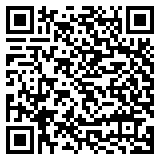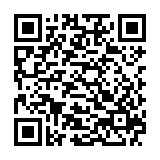Science and technology are all around us, from the smartphones in our pockets to the rockets that explore space. But have you ever wondered how scientists and engineers from different parts of the world work together? How do they share their ideas and discoveries? The answer is language! Language in science and technology helps people communicate, share knowledge, and solve problems. Let’s dive into this fascinating topic and see how language makes all the cool stuff in science and technology possible.
Language: The Bridge of Communication
Imagine you are a scientist in Japan and you discover a new element. How do you tell the rest of the world about it? You write a paper, of course! But it’s not that simple. Scientists need to use a common language so everyone can understand their findings. That’s where English comes in. English is the most widely used language in science and technology. Researchers from different countries publish their work in English, attend conferences where English is spoken, and collaborate on projects using English. This common language acts like a bridge, connecting people from different cultures and backgrounds.
The Language of Coding
When we talk about technology, we can’t forget about coding. Coding is like a special language that computers understand. Just like we use words to talk to each other, programmers use code to talk to computers. There are many programming languages, like Python, Java, and C++. Each language has its own rules, just like English or Spanish. These languages help create software, apps, games, and websites. Without coding languages, we wouldn’t have all the amazing technology we use every day.
Breaking Language Barriers with Technology
While English is the dominant language in science and technology, not everyone speaks it fluently. This is where translation technology comes in. Tools like Google Translate and Microsoft Translator help break down language barriers. They allow scientists and engineers to understand each other’s work, even if they don’t speak the same language. Imagine a German engineer working with a Chinese scientist on a new robot. With the help of translation technology, they can communicate easily and make their project a success.
How Language in Science Shapes Understanding
Language doesn’t just help us communicate; it also shapes how we think and understand the world. For example, some languages have words for concepts that don’t exist in other languages. In science, having the right words can make it easier to understand and describe complex ideas. This is why scientific terms are so important. Words like “photosynthesis” or “quantum mechanics” help scientists explain complicated processes in a way that everyone can understand.
The Power of Precision
In science and technology, precision is key. This means being very clear and exact about what you mean. Think about a recipe for baking a cake. If the instructions are not precise, you might end up with a mess instead of a delicious cake. The same goes for scientific experiments and technological designs. Scientists and engineers use precise language to describe their methods, measurements, and results. This helps ensure that experiments can be repeated and that technologies work as intended.
Language in Scientific Discoveries
Throughout history, many great scientific discoveries were made by people who spoke different languages. Isaac Newton, who discovered the laws of motion and gravity, spoke English. Marie Curie, who discovered radioactivity, spoke Polish and French. Albert Einstein, famous for his theory of relativity, spoke German. These scientists shared their discoveries with the world through the language of science. Today, their work continues to inspire new generations of scientists around the globe.
The Future of Language in Science and Technology
As science and technology continue to advance, the role of language will become even more critical. New discoveries and innovations will need to be shared with the world. This means that learning languages, including coding languages, will be more valuable than ever. It’s exciting to think about how new technologies, like artificial intelligence, might help us communicate even better in the future. Imagine a world where language barriers are no longer a problem, and everyone can share their ideas freely and easily.
Wrapping Up on Language in Science
Language is the glue that holds the world of science and technology together. It allows people to share their knowledge, collaborate on projects, and understand complex ideas. From the everyday use of English in scientific research to the coding languages that power our technology, language plays a crucial role. As we look to the future, the importance of language in science and technology will only grow, helping us to continue making amazing discoveries and creating innovative technologies. So, whether you’re learning a new language or mastering a coding language, remember that you’re becoming part of this incredible world where language and technology work hand in hand.





0 Comments